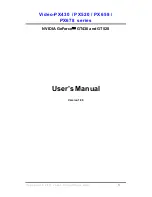
PSI BOX Reference
IEEE 488 Introduction
data in a string? There are two methods that allow IEEE devices
to identify when the talker has sent all its data. These methods
allow devices to receive strings of an arbitrary length without
first specifying how many bytes are going to be sent. This
makes IEEE data exchange extremely flexible.
The first method is using the EOI line. A talker should
only set EOI true with the last data byte it intends to send. All
listeners will recognise EOI as signalling the end of the data
stream, after reading the data byte that has EOI true they will
stop listening.
The second method is a predefined End Of Sequence byte.
To use this method the talker and all listeners must know what
byte ALWAYS marks the end of a string. The talker should
only send its EOS byte as the last byte in the data stream. The
listeners, on detecting this EOS byte, recognise that no more
data is to follow and so stop listening. Usually this End Of
Sequence byte will be a carriage return or a line feed character.
Whilst both methods can be used simultaneously, if data is to be
exchanged without loss, bus hang ups or time outs both talkers
and listeners be correctly configured to detect the end of a data
exchange.
The PSI BOX uses the END command to specify how it
terminates outputs from the PC to the IEEE bus devices. The
EOS command is used to specify how the PSI BOX recognises
the end of an input from an IEEE bus device. Note that on
inputs from the IEEE bus the PSI BOX always stops reading
data when the talking device sends EOI true.
Page 24
Chapter 2
















































